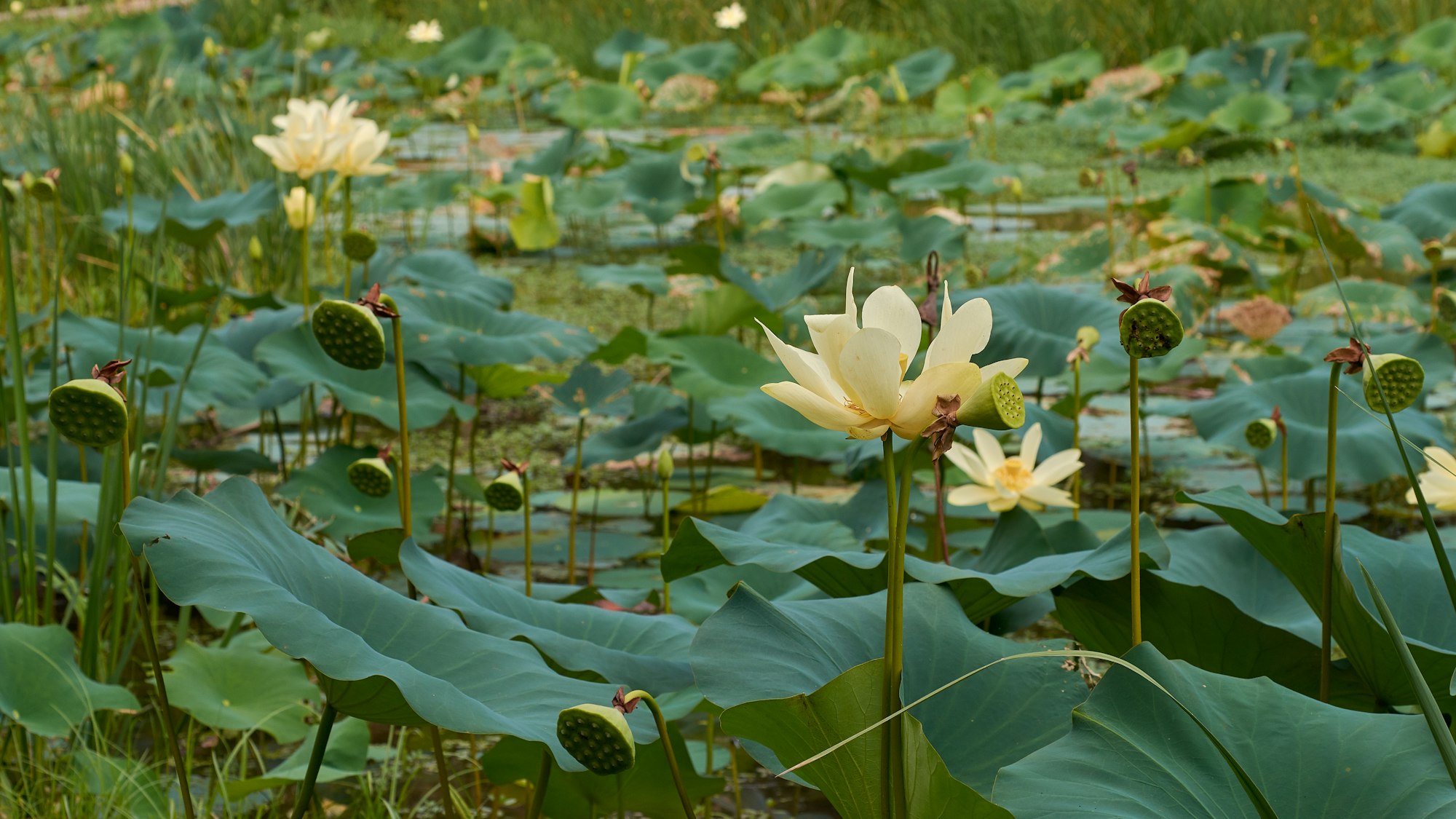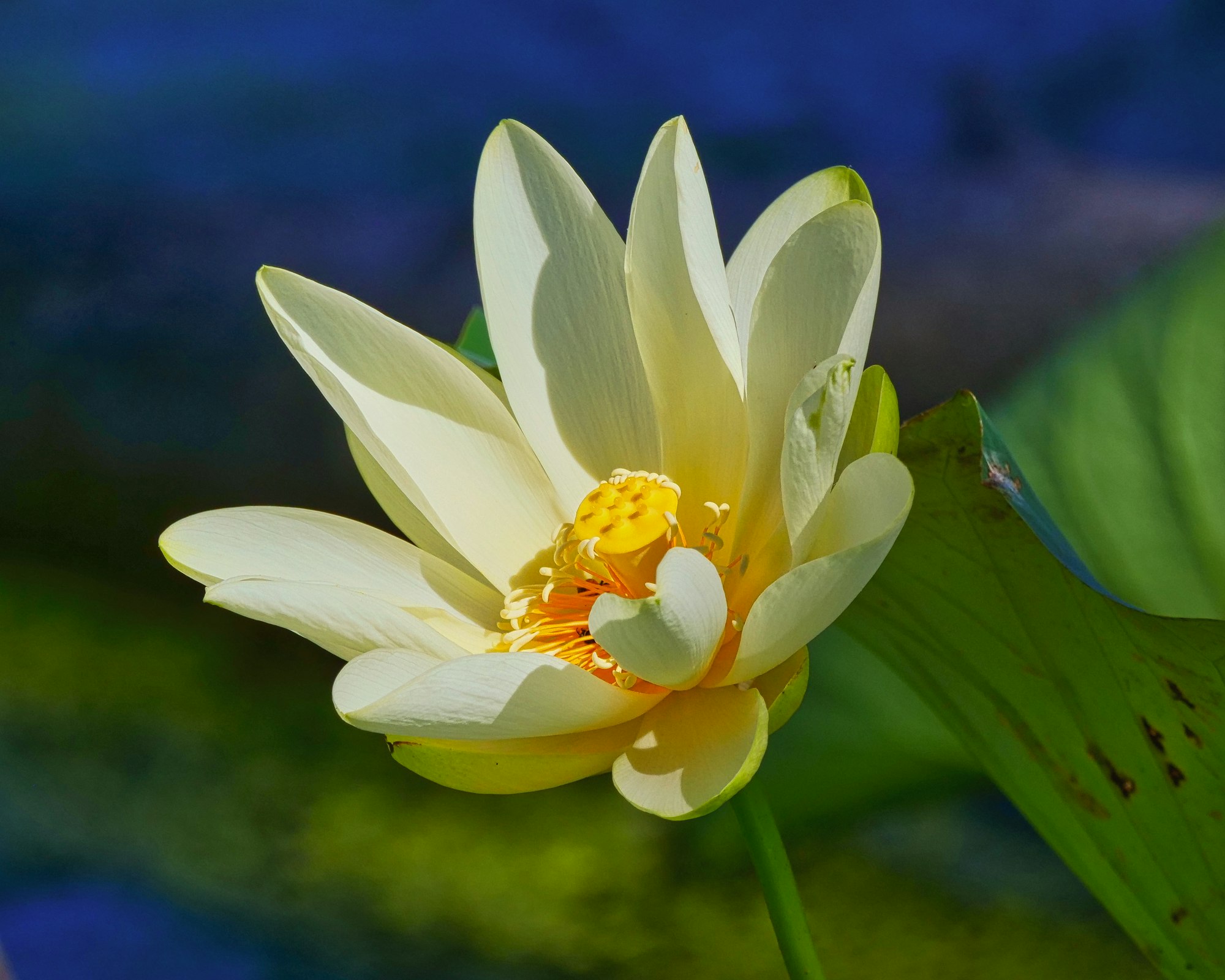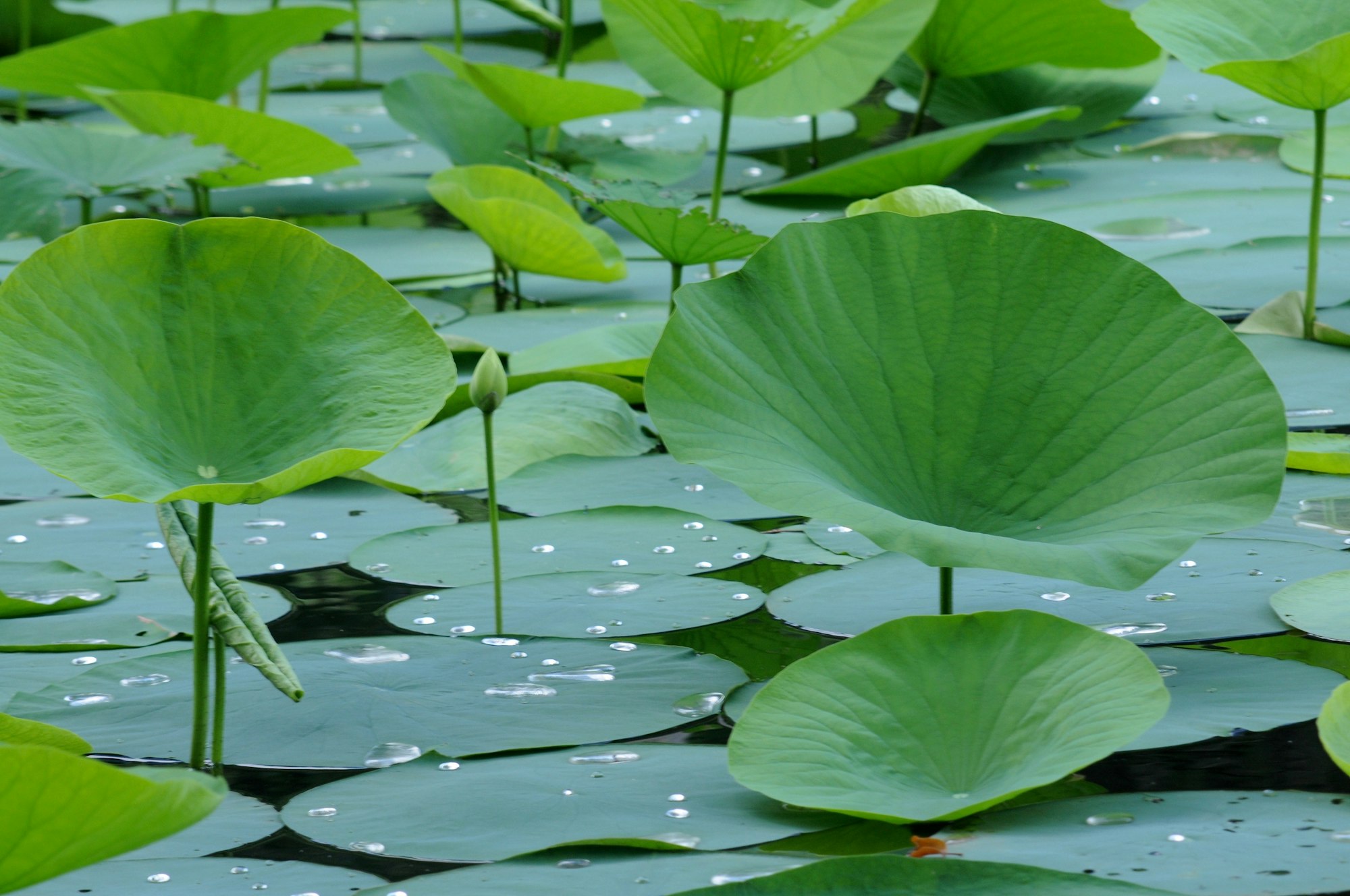American Lotus
American Lotus is a protected species. No removal is allowed.
American Lotus (Nelumbo lutea) is also known as Yellow Lotus, Duck Acorn, Water Nut, Wab-bis-sa-pin, Tewape, Water-Chinquapin, and Sacred Bean.
Found in lakes, quiet streams, and river backwaters, American Lotus has large dish-shaped leaves that float or stand above the water. The attractive, pale yellow flowers are the largest native flower in Minnesota. In the middle of the flower sits a spongy, yellowish-orange pitted receptacle where the acorn-like seeds grow.
Colonies of American Lotus provide excellent habitat for wildlife including fish and waterfowl. Wood duck and mallards eat the seeds, and beaver and muskrat feed on its leaves and tuberous roots which look like a string of sausages. The extensive underground root system holds lake bottom sediments in place, trapping nutrients that may otherwise cause excessive algae blooms.
How to identify: The leaves that rise above the water look like upside-down umbrellas. Unlike water lilies, American Lotus leaves are complete circles with no slit or opening. American Lotus flowers have many petals with a flattened seed pod where it's acorn-like seeds grow.









